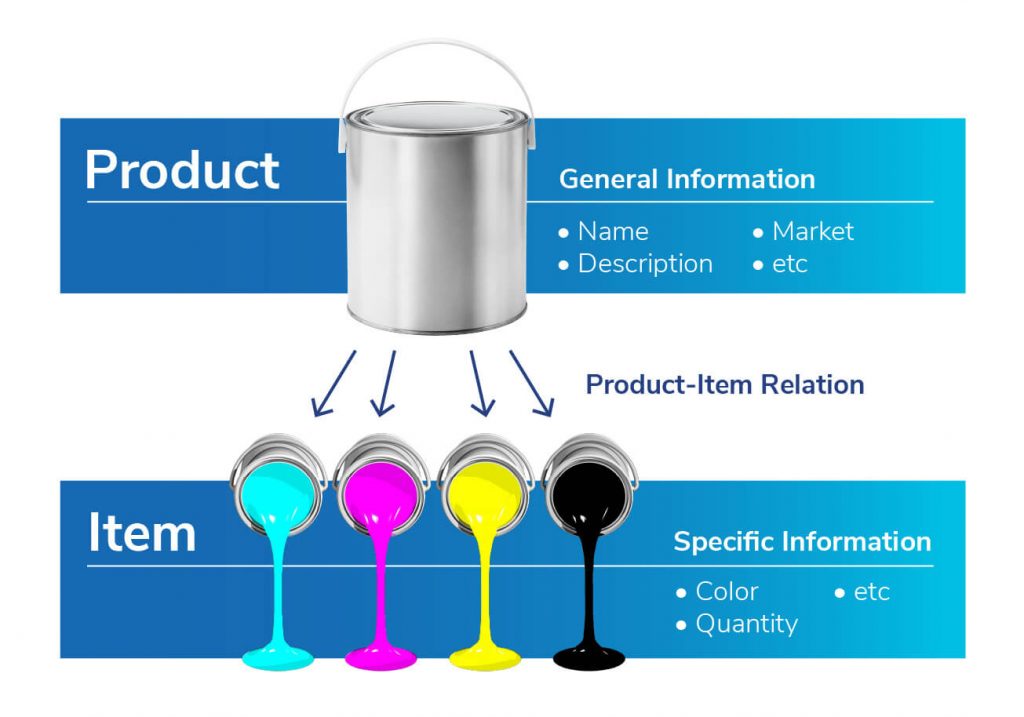How your data model can impact your brand uniqueness and marketability
June 2, 2021Learn how an elastic data model lets your brand's uniqueness shine through and delivers flexibility.
What makes a brand unique? Often, it boils down to its visual expression, personality, and positioning that identifies and differentiates its products from the competition. Beyond the look and feel, how do you translate that uniqueness into your omnichannel approach? The answer comes from your data model.
Before we dive into why a data model is your BFF, let’s quickly look at what a data model is and how it helps you.
What is a data model?
Just as there’s a visual representation of your brand, a data model is a visual representation of all your data. It determines the structure of your data. Think entities, attributes, or relations. The model specifies the data elements that make up your product. PIM data models are one such example.
When pandemic lockdowns led to a surge in home improvement activities, paint purchases surged. That makes it a great example for us to use to describe a data model. Some of the data elements include:
- Oil- vs. water-based
- Internal or external use
- Wood or metal surfaces
- Color
- Quantity
- Quality

You get the idea. Your data model aligns these data elements and structures them to support your business processes.
How does a data model help you?
The pandemic accelerated e-commerce adoption, and it’s clear that the online shift is here to stay. Purchasing online increases the freedom of how we buy and where we start the purchase process. Did you know that 78% of searches are for products, not for brands? This means your product content has to do the talking for you.
P

Your data model is the foundation for your product information. Get it right, and your data model unlocks limitless possibilities, making it easy for you to pivot and adapt at digital speed to the dynamic market conditions. What are your options for data models?
Best practice data model
Typically, the advice is to go with a best practice data model. It comes with a standard structure that ticks the boxes for your industry. Everyone wants that – right? But best practice can also mean everyone is the same. So, how does your brand uniqueness shine through?
Elastic data model
An alternative is the best practice data model to create your own best practice with a flexible data model. How does that work? inRiver’s elastic data model is customer-led, not industry-led. Of course, it also contains best practices, but there’s more to it. For instance, you’re not limited to only adding components.
How does an elastic data model unlock limitless possibilities?
Building enduring customer relations is more than merely selling products. It’s offering a stellar customer experience. It’s that personalized feel. Let’s paint the picture – continuing to use paint as our example.
You’re in your home office, on your third Zoom call of the morning, fed up with looking at that faded wall. You decide to freshen it up, so you need paint. In reality, you need more than that. What about brushes, rollers, masking tape, cleaning fluid, and floor protectors? Do you need advice? Maybe you’d love to watch a how-to video, to read a FAQ, or print out a guide. The personal advice you’d (hopefully) get from the salesperson in the store needs to be available online to help your customers plan their online order.
Unlike best practice-based models, which force you to work in a way that conforms to their structure, inRiver’s elastic data model allows you to start from the outside in. It’s a flexible modeling framework. And because inriver is a multitenant SaaS solution, any changes you make are configuration – not customization. You identify what your customers need and want, the touchpoint or channel requirements, and then map it back into the data model. The flexibility of the elastic data model makes it easy to organize your data and customize your enrichment process, which enables you to create an individual model that supports specific solutions – all without adding any unnecessary overhead.
A data model that offers control and flexibility
Put simply, inriver’s elastic data model consists of information containers, and the data model describes how those containers relate to each other. What happens if you need to add a new product bundle? No problem. From a single 360° view, you can see all of your products and their associated containers, then immediately add another. You can then map the links by setting up a rule or manually drag and drop.
Want to include the latest immersive technology, such as virtual reality, artificial reality, or 3D photography? Go ahead – they’re a resource type labeled EntityType. It works the same way for channels. Have you entered into a new market and need to sell into their popular marketplace or via a local distributor? Update your channel structure or create a new one for each different language or market. Your choice. Want to know the best part? You can do this yourself. No need to get a third-party supplier to make the changes for you. It’s fast and cost-effective, a win-win for your brand.
With our elastic data model, you’re in control of the strategy and you have the flexibility you need to respond to the latest trends. You can set the personalization for your brand customer experience. Why just deliver the industry standard when you can deliver a unique experience and delight your customers?
Why not request a demo? See how you can streamline manual processes, accelerate time to market, and improve customer experience with inriver.
author
Fedde van Feggelen
Product Manager
With more than 20 years of experience with customer relationship management, people management, sales, and consultancy, Fedde has a natural affinity to see solutions through the eyes of a customer. He joined inriver in 2015 as Director Sales Engineering, EMEA where he was responsible for designing excellent omnichannel PIM solutions, including data models, supporting business processes and understands the end-2-end e-commerce ecosystem. He is now turning his attention and expertise towards enhancing our product suite, with a move into the Product Management team.
read more